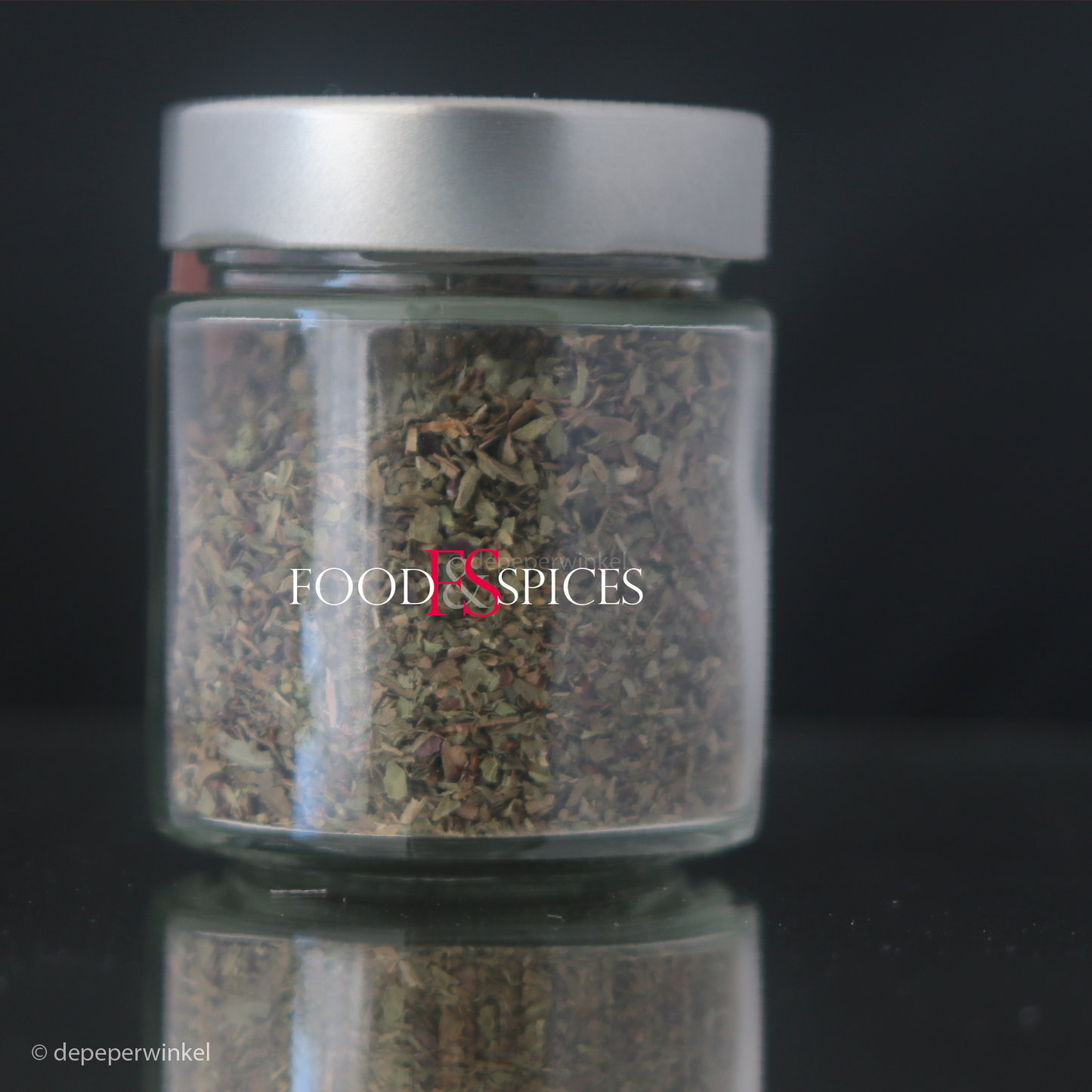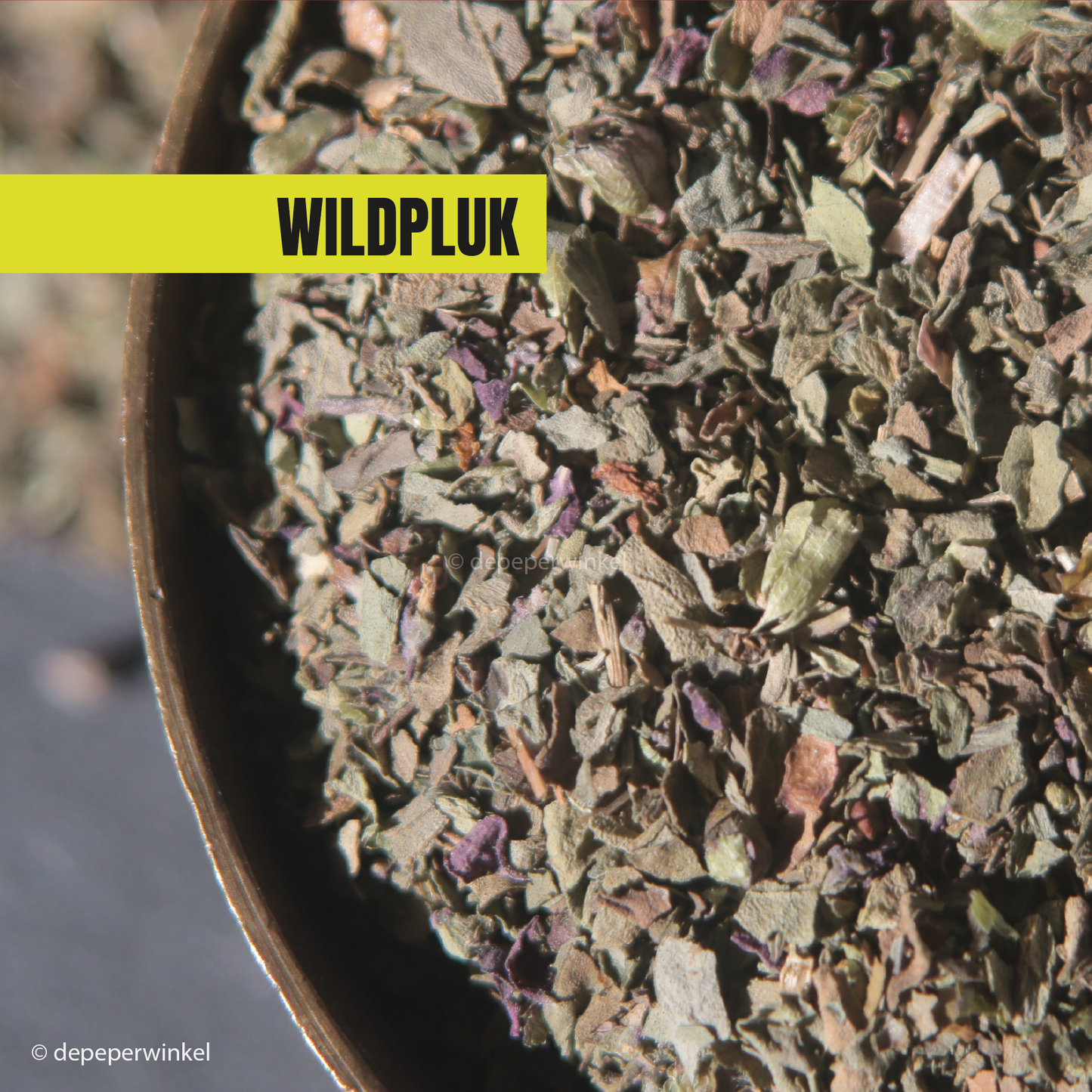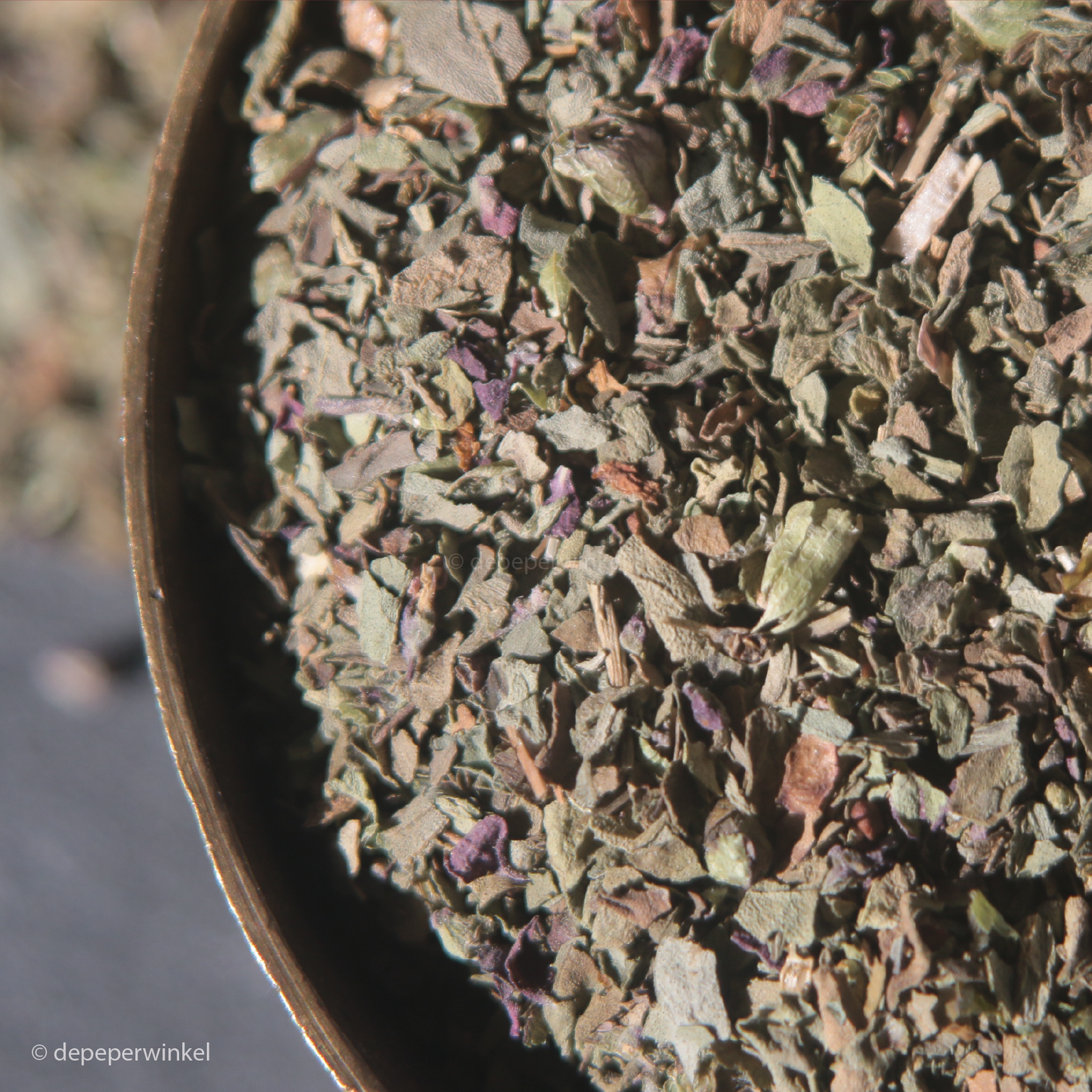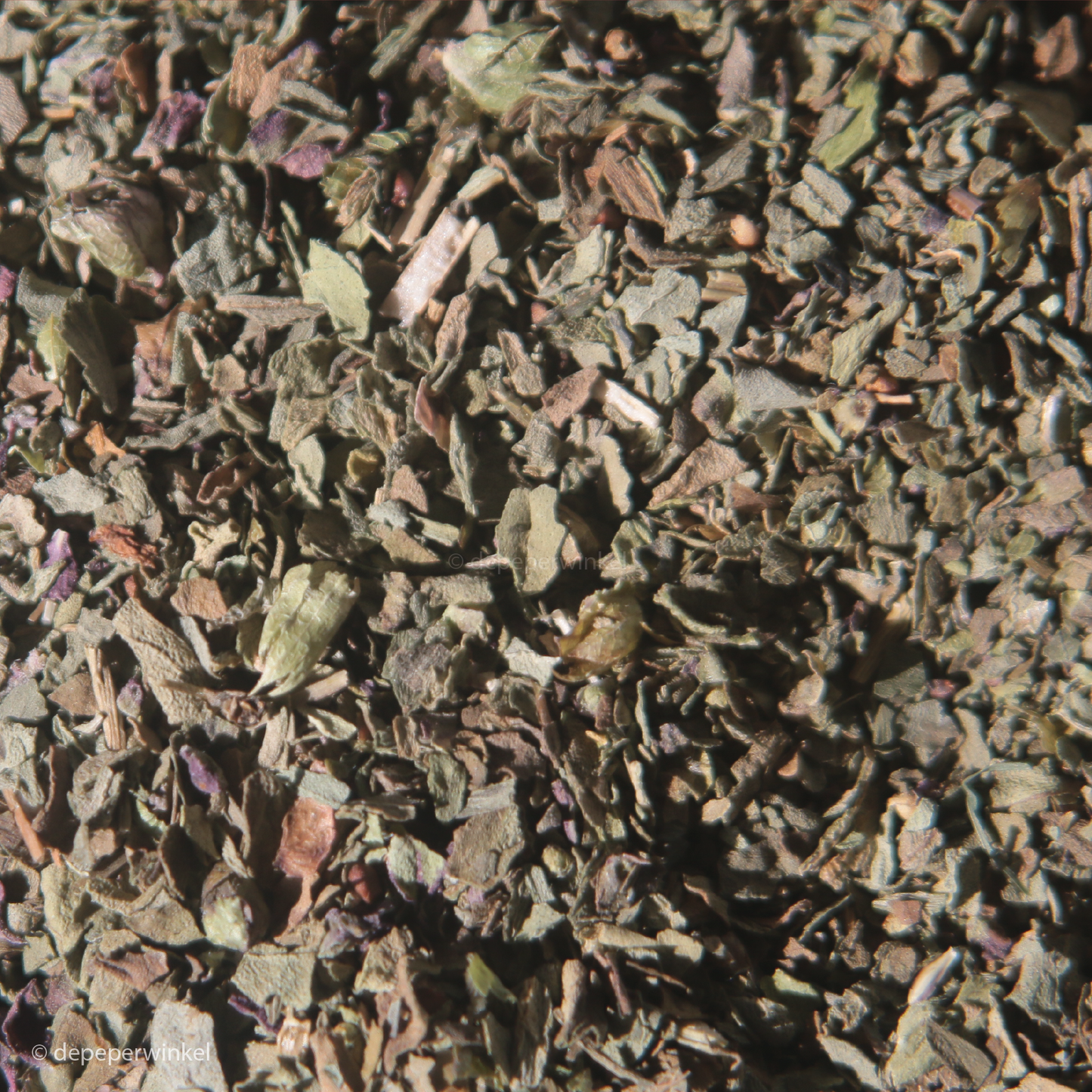depeperwinkel
Basil (vasilikos)
Basil (vasilikos)
Unable to load availability for pickup
This spicy basil was picked on the island of Crete, the island where the mountain slopes are colored in the summer by a carpet of flowering herbs. This wild basil is distinguished by a high content of anise camphor (anethole), which makes the taste strong and sweet, just like that of Thai basil.
This wild basil comes from the Ocimum basilicum, one of the many herbaceous plants that grow naturally on the island of Crete. Not to be confused with Clinopodium vulgare, the true wild basil, which also occurs on Crete and is also used as a herb.
Basil is sometimes called the 'king herb', but the official name is sweet basil. Today we know the plant mainly from the kitchen basil, usually a variety of the Basilico Genovese, the stereotype for the Italian basil.
Sweet basil comes from India, where 'tulsi', the collective name for various types of basil, is a sacred plant that is often planted in front of the house in a specially constructed bed, the vindradas.
Of all basil varieties, this wild growing basil and Thai basil are the richest in anethole. That distinguishes this basil from the rather pale fresh basil in that respect. Our Cretan basil tastes slightly sweet, but with clear licorice accents, and is therefore delicious with stewed fish (think haddock) and roast lamb, but of course also in pasta and on pizza.
For the famous Pesto Genovese, Italians prefer to choose 'basil lettuce leaves' with their slightly crunchy and slightly peppery leaves. Although the bite is missing, the wild basil is also very suitable for this dish.
Smell and taste
Only the leaves of basil are used as a herb. The characteristic smell is that of methyl chavicol, which we also know from tarragon and chervil. The broad taste and aroma of basil means that it combines well with lemon, lime, mint, cloves, anise and star anise. Some of the aromas and flavors (essential oils) in basil are:
- methyl-chavicol (estragole), anise-like, as in tarragon and chervil,
- anethole, anise-like,
- methyl-eugenol, spicy, woody and sweet, as in cloves,
- terpine-4-ol, sweet woody and peppery aroma, like juniper,
- linalol, responsible for the fresh floral scent, for the scents of rosewood and coriander,
- methyl cinnamate, fruity, sweet taste like strawberries, smell of cinnamon,
- 1,8-cineole, eucalyptol, the refreshing taste of myrtle (and eucalyptus oil),
- (E)-caryophyllene, a taste between clove and turpentine, and
- limonene, the smell of lemon peel.
Use
The flavor of dried basil is best achieved when the leaves are added towards the end of the cooking time and allowed for no more than ten minutes to reabsorb water, develop flavor and share with the dish .
Wild basil can be excellently combined with oregano, thyme, rosemary and fennel seeds. Dosage: instead of a tablespoon of finely chopped fresh basil, use a teaspoon of dried basil (and vice versa). Basil is used in a 'sea of classic dishes' from the Mediterranean, but also in Indian cuisine.
Features:
- 100% dried leaves (zipped, virtually no twigs)
- grows in the wild, hand-picked
- origin: Greece (Crete)
Assortment
- available in glass and stand-up pouch (no test tubes)
- glass jar contains 20 grams
- stand-up pouches with a capacity of up to 30 to 300 grams
- larger quantities on request
Gift packaging
- the jar is available in a tasteful gift packaging, consisting of a cube box filled with black tissue paper
- for an overview of our gift packaging, please refer to the section gift packaging
Save:
- store your basil in closed packaging
- preferably store in a dark, dry and cool place
- best before November 2025 (11-2025)
- this expiration date is an indication
Batch number
The batch number helps us trace which supply an item comes from. It is stated on the packing slip and the invoice
Share







